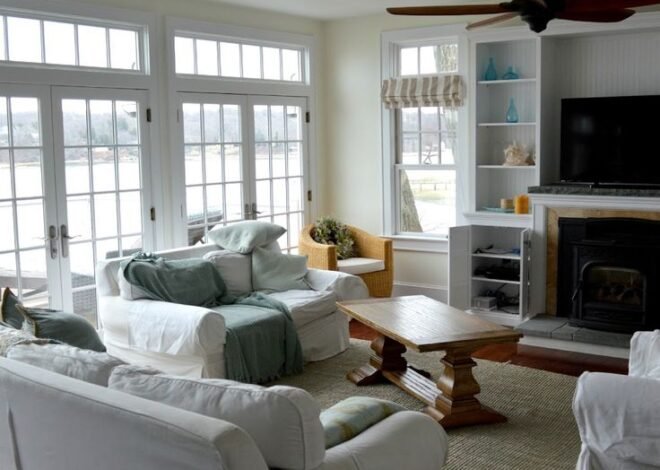
The Shifting Foundations: How Real Estate is Transforming Beyond Bricks and Mortar
Real estate stands at a fascinating inflection point. For centuries, it remained one of the most tangible, predictable asset classes – land, structures, location. Value was measured in square footage, curb appeal, and proximity to amenities. Today, however, the very ground beneath the industry is shifting dramatically. Driven by technological leaps, evolving human needs, environmental imperatives, and economic innovation, real estate is undergoing a metamorphosis that transcends traditional boundaries. It’s becoming less about static structures and more about dynamic experiences, integrated ecosystems, and entirely new paradigms of ownership and use. Understanding these profound changes is crucial for anyone navigating the landscape of property, whether as an investor, developer, homeowner, or renter.
The Sustainability Imperative: From Greenwashing to Regenerative Design
The conversation around sustainability in real estate has matured significantly. It’s no longer sufficient to slap a few solar panels on a roof and install low-flow toilets. The cutting edge of development embraces regenerative design – buildings and communities that actively contribute more than they consume. This represents a seismic shift from “less bad” to “net positive.”
Leading-edge projects now integrate biophilic design principles that go beyond potted plants. Think living walls that purify air naturally, sophisticated water capture and recycling systems that minimize municipal demand, and materials sourced not just for low embodied carbon, but for their ability to sequester carbon over their lifespan. The Bullitt Center in Seattle, often called the “greenest commercial building in the world,” generates its own energy, collects and treats its own water, and was constructed without any toxic materials. It’s not just sustainable; it’s self-sufficient and restorative.
This trend is driven by a potent combination of tightening regulations, investor pressure (ESG criteria are now mainstream), and growing tenant demand. People increasingly want to live and work in environments that align with their values and promote well-being. Smart developers recognize that true sustainability isn’t a cost center; it’s a value driver, commanding premium rents, attracting quality tenants, reducing long-term operational risks, and future-proofing assets against climate impacts and evolving regulations. The focus is shifting from isolated “green features” to holistic systems thinking, where the building interacts positively with its environment and occupants.
The Human Experience Revolution: Designing for Wellbeing, Connection, and Flexibility
The pandemic acted as a massive catalyst, fundamentally altering our relationship with the spaces we inhabit. The rigid distinction between “home,” “work,” and “leisure” has blurred, demanding a radical rethinking of design priorities. The new mantra is human-centric design, placing physical, mental, and social wellbeing at the core of every project.
Residential developments are moving beyond mere square footage. Amenities now focus on fostering community and holistic health: co-working spaces that feel like boutique hotels, wellness centers offering meditation and fitness classes, communal kitchens for shared meals, and thoughtfully designed outdoor areas that encourage interaction and connection with nature. The concept of “15-minute neighborhoods” – where daily needs are accessible within a short walk or bike ride – is gaining traction, promoting both convenience and community cohesion.
In the commercial sector, the office is being reimagined not as a place of mandatory presence, but as a destination for collaboration, culture-building, and focused work away from home distractions. This means flexible layouts, abundant natural light, superior air quality, acoustic comfort, and integrated technology that seamlessly supports hybrid work models. Retail spaces are evolving from transactional boxes into experiential hubs – think showrooms, community event spaces, and local service centers integrated with residential or office components.
This shift demands deep empathy and a departure from cookie-cutter solutions. Successful developers are investing heavily in understanding the nuanced needs and aspirations of their target users, creating spaces that resonate emotionally and functionally. The value proposition is no longer just about the physical structure; it’s about the quality of life and sense of belonging it enables.
Technology Integration: Beyond Smart Gadgets to Predictive Ecosystems
While “smart homes” and “smart buildings” have been buzzwords for years, the current wave of technological integration is far more sophisticated and impactful. It’s moving beyond connected thermostats and voice-controlled lighting towards creating intelligent, predictive environments that enhance efficiency, safety, and user experience seamlessly.
The backbone is the Internet of Things (IoT) – a vast network of sensors embedded throughout buildings, monitoring everything from occupancy patterns and air quality to equipment performance and energy usage. This data deluge is meaningless without sophisticated analytics. Artificial intelligence and machine learning algorithms sift through this information in real-time, identifying patterns, predicting maintenance needs before failures occur (predictive maintenance), optimizing energy consumption dynamically, and even adapting environmental conditions (lighting, temperature, acoustics) based on occupancy and activity.
Imagine an office building that knows which meeting rooms are actually being used and adjusts HVAC accordingly, or an apartment complex that detects a potential water leak in a unit and alerts maintenance before significant damage occurs. This isn’t science fiction; it’s happening in leading-edge properties globally.
Furthermore, technology is revolutionizing the transactional side of real estate. Virtual reality (VR) and augmented reality (AR) offer immersive property tours, allowing potential buyers or renters to explore spaces remotely with remarkable fidelity. Blockchain technology promises to streamline and secure property transactions, potentially reducing fraud and the time/cost associated with title transfers and escrow. Big data analytics are providing unprecedented insights into market trends, neighborhood dynamics, and investment risks, empowering more informed decision-making for all stakeholders. The key is that technology is becoming invisible yet indispensable – the silent intelligence optimizing the background of our built environment.
The Financial Evolution: New Models of Ownership, Access, and Value
Traditional real estate finance – characterized by large capital requirements, illiquidity, and relatively uniform ownership structures – is being disrupted by innovative financial models and technologies. This evolution is democratizing access and creating new pathways for value creation.
Fractional ownership and Real Estate Investment Trusts (REITs) have long provided avenues for smaller investors, but tokenization is taking this to a new level. By representing ownership shares in a property as digital tokens on a blockchain, tokenization offers the potential for increased liquidity (tokens can be traded more easily), lower minimum investment thresholds, and greater transparency. This could unlock trillions in capital currently sidelined due to the high barriers to entry in direct property investment.
Simultaneously, the rise of the access economy is challenging traditional ownership. Co-living and co-working companies bundle space, services, and community into flexible membership models, appealing to those prioritizing experience and flexibility over long-term commitment. Build-to-rent communities, designed specifically for the rental market with high-quality amenities and management, are flourishing, catering to those who value mobility or are priced out of ownership.
Even traditional ownership is being reimagined. Community Land Trusts (CLTs) separate the ownership of land from buildings, ensuring long-term affordability by removing land from the speculative market. Shared equity models allow buyers to purchase a portion of a home while an entity holds the rest, making ownership more accessible.
These financial innovations are driven by demographic shifts (millennials and Gen Z have different attitudes towards ownership and debt), economic pressures (affordability crises in many markets), and technological enablement. They represent a fundamental shift from viewing real estate solely as a physical asset to understanding it as a platform for delivering flexible, accessible, and diversified financial products and experiences.
Navigating the New Landscape: Implications and Opportunities
This convergence of sustainability imperatives, human-centric design, technological integration, and financial innovation creates a complex but opportunity-rich landscape. For developers and investors, the message is clear: adapt or risk obsolescence. Success requires embracing systems thinking, prioritizing long-term value over short-term gains, investing in understanding end-users deeply, and integrating technology and sustainability from the outset, not as afterthoughts. Specialization will be key – expertise in creating regenerative buildings, fostering thriving communities, or leveraging PropTech effectively will command premiums.
For homeowners and renters, the evolving market offers more choices tailored to diverse lifestyles and values. The emphasis on wellbeing, community, and flexibility means finding spaces that truly enhance quality of life is increasingly possible. However, navigating the complexities of new ownership models, smart technology, and sustainability claims requires greater duegence and literacy.
For communities and policymakers, the transformation presents both challenges and opportunities. Zoning regulations often lag behind innovative housing models and mixed-use developments. Ensuring equitable access to the benefits of these trends – avoiding the creation of “sustainable enclaves” or “tech-enabled ghettos” – requires proactive planning and policy. Supporting the development of 15-minute neighborhoods, incentivizing regenerative building practices, and fostering digital inclusion will be crucial for creating resilient, thriving urban environments.
Real estate, at its core, is about providing the physical framework for human life. The profound shifts underway reflect our evolving understanding of what it means to live well, connect meaningfully, and exist sustainably on this planet. The buildings and communities rising today aren’t just structures; they are testaments to our aspirations. They are becoming living ecosystems that breathe, learn, adapt, and nurture. The foundations are shifting, not from under us, but towards a more responsive, responsible, and ultimately more human future. Those who recognize this transformation and engage with it thoughtfully won’t just build better properties; they’ll help build a better world.


